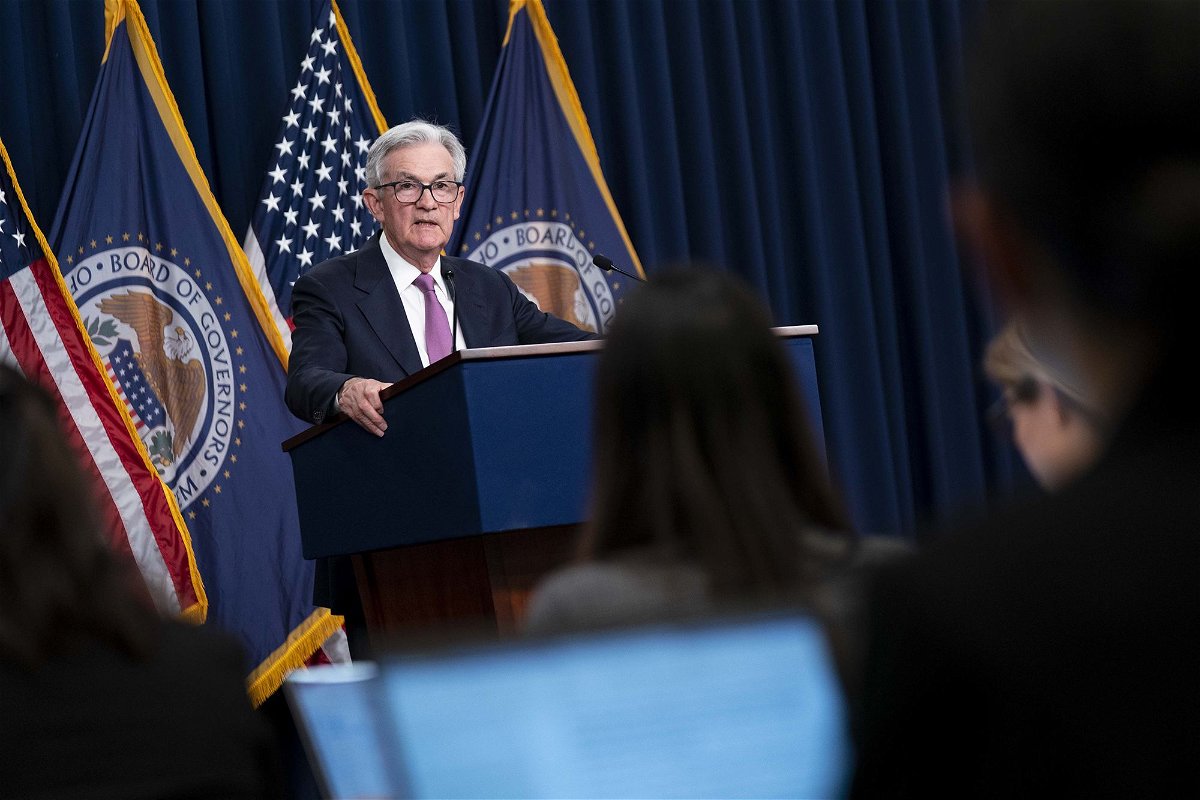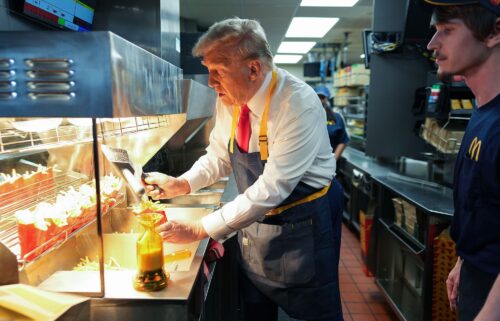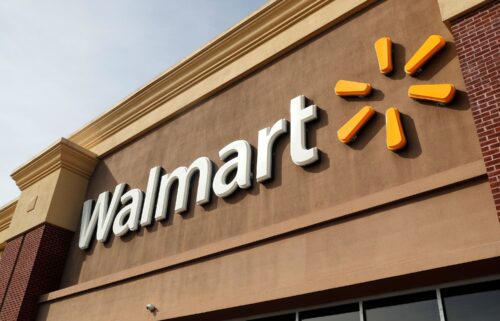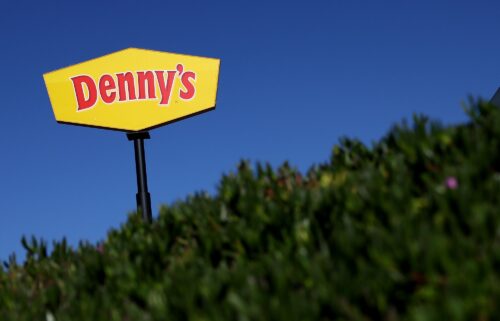What to expect from this week’s Fed meeting

Fed Chair Jerome Powell speaks during a news conference following a Federal Open Market Committee meeting in Washington
By Bryan Mena, CNN
Washington, DC (CNN) — The Federal Reserve is expected to raise its benchmark lending rate this week to the highest level in 22 years — just one month after hitting pause on a historic spate of rate hikes meant to crush decades-high inflation. Moreover, the Fed could also hint at the possibility of another rate increase this year — its 12th hike since it began raising rates last spring — even though inflation has steadily cooled in recent months.
After the Fed’s July monetary policy meeting, which concludes on Wednesday, investors will be looking for more details around that potential hike. While it could happen at the September or November meeting, it’s also possible that July could see the last hike of this cycle. The second hike coming in December is unlikely, but possible if inflation re-emerges because of an unforeseen economic shock.
Much depends on what economic data show in the next eight weeks — and things can go either way. That’s why the Fed is trying to retain the option of another rate increase in case inflation proves to be more resilient than expected. Fed Chair Jerome Powell’s remarks during an annual gathering of central bankers and economists in Wyoming next month could shed more light on what to expect for the September decision.
There are three possibilities for what the Fed might do moving forward, according to economists: a second consecutive rate hike in September, one in November, or no more rate hikes after July. It’s anyone’s guess what will ultimately transpire, since the economy has consistently defied expectations. But right now, there’s no denying there’s optimism in the air.
A sense of hope
Americans haven’t felt this optimistic about the economy and the potential for inflation to ease since 2021. Also, economists are noticing better business conditions and investors have grown more bullish on the Fed’s chances of pulling off a soft landing, a scenario in which the central bank succeeds at bringing down inflation without tanking the economy.
This new-found confidence comes as inflation has slowed and the economy has held up — all on the backdrop of 10 straight rate hikes since the Fed began to lift rates in March 2022. The economy’s remarkable resilience has quelled fears of a recession somewhat. Some Wall Street bankers now think a mild recession might happen later than expected.
That’s all thanks to inflation’s cooldown. The Consumer Price Index rose 3% in June, a much slower pace than the four-decade high of 9.1% in June 2022. The Fed’s preferred inflation gauge — the Personal Consumption Expenditures price index — rose 3.8% in May from a year earlier, down from the 4.3% annual rise seen in April. The Commerce Department releases the June reading of the Fed’s favorite inflation measure Friday.
Consumer optimism is a great sign for the Fed because it means Americans have faith that inflation will eventually come down to a sustainable level they’re familiar with. Former Fed chair Ben Bernanke, who steered the central bank during the financial crisis and who recently co-authored a widely cited paper on inflation’s origins, recently said the July hike might just be the last one.
And there is certainly a dovish camp at the Federal Open Market Committee, the central bank committee that decides interest rate moves, so the end of rate hikes after July is very much a possibility.
“I have the view that we can be patient — our policy right now is clearly in the restrictive territory,” Atlanta Fed President Raphael Bostic said in a speech earlier this month. “We continue to see signs that the economy is slowing down, which tells me the restrictiveness is working.”
The end of rate hikes would usher in the next phase of the Fed’s inflation fight, which would likely be to simply hold rates steady until inflation is fully tamped down. That could take a several months or even a year. The Fed held rates steady for nine straight meetings over the span of a year the last time it paused a rate-hiking campaign in 2006.
But there’s still the very real risk of US consumers simply accepting higher prices if inflation’s defeat stalls for too long, making a case for one more rate hike. And if there’s one thing the Fed doesn’t want to do, it is to give financial markets any signal that rate cuts are coming some time soon.
A hawkish Fed wants to keep hopes in check
The Fed doesn’t want to back itself into a corner where it doesn’t have the option of hiking, at least not without surprising financial markets.
“Powell will still maintain a fairly hawkish line, I don’t think they’re going to back off yet, but they’ll have to acknowledge the fact that inflation has come down, so they will lean to the labor market still being very strong,” Seema Shah, chief global strategist at Principal Asset Management, told CNN. “And as long as it is very strong, there’s always going to be a risk that wage numbers continue to rise, risking undoing all their hard work.”
Top economists argue the labor market will prove to be a persistent source of inflationary pressure that would require the Fed to slow the economy further. The Fed is closely watching the labor market for signs that demand and supply are coming back “into better balance,” as Powell describes it. Conceivably, that could mean fewer job openings do the trick of easing pressure off wage growth and in turn, consumer prices.
Higher labor costs loom large for service-providing businesses such as restaurants and hospitals. Those are labor-intensive industries, so having to beef up compensation to hire enough staff means those higher costs can be passed on to consumers. Though for some businesses, it has become harder to pass costs on, according to anecdotes in the Fed’s Beige Book, a compilation of survey responses from businesses around the country.
The Labor Department releases its Employment Cost Index for the second quarter this Friday, a key report that will inform officials if underlying inflationary pressures have lost any steam in recent months. The Commerce Department also releases its first estimate of second-quarter gross domestic product the day after the Fed announces its policy decision Wednesday.
Some officials have already argued for hiking in September, seen as ripping the bandage off and dealing one final blow to inflation before commencing the next phase of the inflation fight.
“If inflation does not continue to show progress and there are no suggestions of a significant slowdown in economic activity, then a second 25-basis-point [quarter-point] hike should come sooner rather than later, but that decision is for the future,” Fed Governor Christopher Waller said this month in a forum.
Hiking in November — or the hike-at-every-other-meeting approach — would simply be the Fed’s attempt at easing its foot off the gas pedal. A hike in July would already resemble that approach.
“As you’re getting closer to your final destination, the terminal rate, it makes sense to go a little slower, similar to when you’re on the highway and you’re getting closer to your exit, you start slowing down so you don’t miss it,” said José Torres, senior economist at Interactive Brokers. “That’s pretty much the rationale there — slowing down to see the effect of previous rate hikes, in case we get a month of really, really bad data.”
Powell described it exactly that way during congressional testimony last month.
Whatever the Fed decides to do won’t come without a vigorous debate, and perhaps even a dissent, though the Fed has a tradition of collegiality. Nearly all of the Fed’s decisions have been unanimous since the central bank began lifting rates in March 2022, with the exception of two meetings early in the Fed’s current inflation battle.
The Fed is expected to announce its July policy decision at 2 p.m. ET on Wednesday, followed by a 2:30 p.m. press conference with Chair Jerome Powell.
The-CNN-Wire
™ & © 2023 Cable News Network, Inc., a Warner Bros. Discovery Company. All rights reserved.



